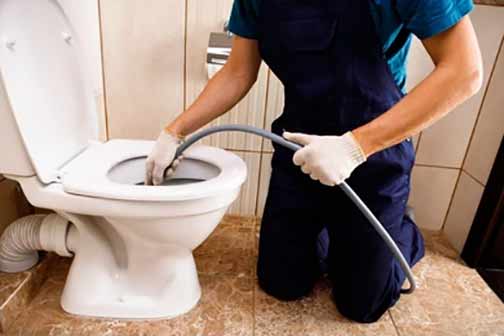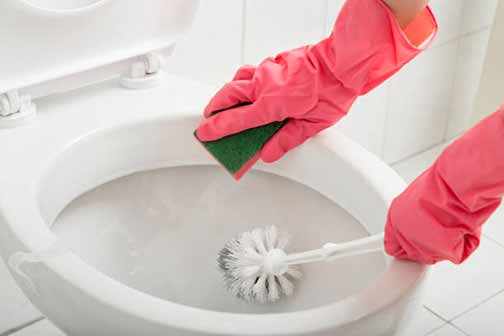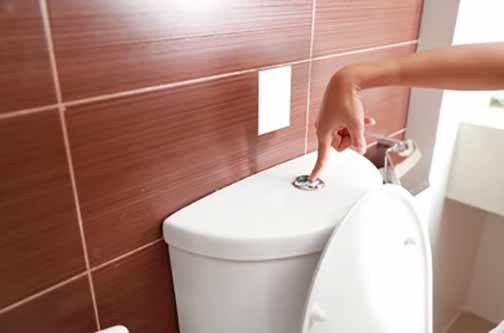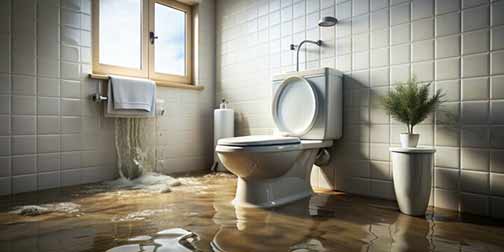Understanding the Causes of Persistent Toilet Overflow
To effectively tackle persistent toilet overflow issues, it is crucial to first understand the underlying causes. Common causes of toilet overflow include blockages in the toilet trap, issues with a sewer system or septic tank, and problems within the plumbing system. By identifying and addressing these root causes, you can prevent future overflow incidents and maintain a properly functioning toilet.
Identifying Blockages in the Toilet Trap
The toilet trap, a curved section of the toilet’s drainpipe, is designed to hold water and prevent sewer gases from entering the bathroom. However, it can become blocked by various objects, such as excessive toilet paper, sanitary products, or foreign objects accidentally flushed down the toilet. To identify blockages in the toilet trap, observe if the water level in the bowl rises or if the flushing action is weak. If a blockage is suspected, use a plunger or a toilet auger to remove the obstruction.
Addressing Septic Tank Issues
Septic tank problems can also contribute to persistent toilet overflow. If the septic tank is full or malfunctioning, it can cause wastewater to back up into the toilet. Regular maintenance and pumping of the septic tank, including pumping it out every three to five years, can help prevent overflow issues. Additionally, avoid flushing non-biodegradable items and excessive amounts of toilet paper to reduce the risk of septic tank problems.
Resolving Plumbing System Problems
Issues within the plumbing system, such as clogged pipes or faulty components, can lead to toilet overflow. Inspect the plumbing system for signs of blockages, leaks, or damaged pipes. If necessary, contact a professional plumber to diagnose and repair any issues. Regular maintenance of the plumbing system, such as cleaning the pipes and checking for leaks, can help prevent future overflow incidents.
Implementing Preventative Measures
Preventative measures can significantly reduce the likelihood of persistent toilet overflow. Educate household members about what can and cannot be flushed down the toilet. Use a toilet guard to prevent foreign objects from accidentally falling into the toilet. Regularly clean the toilet and inspect the plumbing system for any signs of potential issues. By taking these proactive steps, you can maintain a properly functioning toilet and avoid the inconvenience of overflow problems.

Utilizing Professional Plumbing Services
While some toilet overflow issues can be resolved with DIY methods, persistent problems may require the expertise of a professional plumber. Professional plumbing services can provide thorough inspections, accurate diagnoses, and effective repairs to address the root causes of toilet overflow. Additionally, professional plumbers can offer valuable advice on maintaining the plumbing system and preventing future issues.
Understanding the Impact of Water Pressure
Water pressure plays a significant role in the proper functioning of a toilet. High water pressure can cause excessive water flow, leading to overflow, while low water pressure can result in weak flushing action and incomplete waste removal. To ensure optimal water pressure, install a pressure regulator and regularly check the water pressure levels. Adjust the pressure as needed to maintain a balance that supports efficient toilet operation without causing overflow.
Exploring Advanced Toilet Technologies
Modern toilet technologies can help prevent overflow issues and improve overall bathroom hygiene. Consider upgrading to a high-efficiency toilet (HET) or a dual-flush toilet, which uses less water per flush and reduces the risk of overflow. Additionally, smart toilets equipped with sensors and automatic flushing mechanisms can detect and prevent potential overflow situations. Investing in advanced toilet technologies can enhance the performance and reliability of your bathroom fixtures.
Maintaining a Clean and Hygienic Bathroom Environment
A clean and hygienic bathroom environment is essential for preventing toilet overflow and promoting overall health and well-being. Regularly clean the toilet bowl, seat, and surrounding areas with disinfectant cleaners to prevent the buildup of bacteria and grime. Ensure proper ventilation in the bathroom to reduce humidity levels and prevent mold growth. By maintaining a clean and hygienic bathroom, you can reduce the risk of overflow issues and create a more pleasant and sanitary space.
Educating Household Members on Proper Toilet Use
Proper toilet use is key to preventing overflow problems. Educate household members, including children, on the importance of flushing only appropriate items down the toilet. Emphasize the significance of using the right amount of toilet paper and avoiding the disposal of non-biodegradable items in the toilet. By fostering responsible toilet use habits, you can minimize the risk of blockages and overflow incidents.

Conducting Regular Inspections and Maintenance
Regular inspections and maintenance are essential for preventing persistent toilet overflow issues. Schedule routine checks of the toilet, plumbing and sewer system, or your septic tank to identify and address potential problems early. Perform regular cleaning and maintenance tasks, such as using a toilet brush to clean the bowl and inspecting the plumbing for leaks or blockages. By staying proactive with inspections and maintenance, you can ensure the long-term functionality and reliability of your toilet.
Understanding the Role of Toilet Flappers and Fill Valves
Toilet flappers and fill valves are critical components that regulate the water flow and flushing action of the toilet. A faulty flapper can cause continuous water flow, leading to overflow, while a malfunctioning fill valve can result in improper water levels in the tank. Regularly inspect and replace worn-out flappers and fill valves to maintain optimal toilet performance. If you notice any signs of wear or malfunction, such as water running continuously or weak flushing, replace these components promptly.
Exploring Eco-Friendly Toilet Solutions
Eco-friendly toilet solutions not only help conserve water but also reduce the risk of overflow issues. Consider installing water-saving devices, such as low-flow toilets or dual-flush mechanisms, which use less water per flush and minimize the chances of overflow. Additionally, eco-friendly cleaning products can help maintain a clean toilet without harming the environment. By adopting eco-friendly toilet solutions, you can contribute to water conservation efforts and promote sustainable bathroom practices.
Addressing Common Misconceptions About Toilet Overflow
There are several common misconceptions about toilet overflow that can lead to improper handling of the issue. One misconception is that using excessive amounts of toilet paper is harmless, when in fact, it can cause blockages and overflow. Another misconception is that flushing non-biodegradable items, such as wipes or sanitary products, is acceptable, but these items can clog the plumbing system. Educate yourself and others about the realities of toilet use and maintenance to prevent overflow problems effectively.
Creating a Toilet Overflow Emergency Plan
Having an emergency plan in place can help you respond quickly and effectively to toilet overflow incidents. Outline the steps to take in the event of an overflow, such as shutting off the water supply, using a plunger to clear blockages, and contacting a nearby plumber if necessary. Keep essential tools and supplies, such as a plunger, toilet auger, and cleaning materials, readily accessible. By being prepared for emergencies, you can minimize damage and quickly restore the functionality of your toilet.

Implementing Long-Term Solutions for Persistent Overflow Issues
For persistent toilet overflow issues, long-term solutions may be necessary to address the root causes. This may involve upgrading the plumbing system, replacing outdated toilet components, or installing advanced toilet technologies. Speak with a plumber to assess the situation and recommend appropriate long-term solutions. By investing in long-term solutions, you can ensure the reliability and efficiency of your toilet for years to come.
Balancing Aesthetics and Functionality in Bathroom Design
When designing or renovating a bathroom, it is important to balance aesthetics and functionality to prevent toilet overflow issues. Choose high-quality fixtures and materials that are both visually appealing and durable. Ensure that the layout of the bathroom allows for easy access to the toilet and plumbing components for maintenance and repairs. By prioritizing both aesthetics and functionality, you can create a beautiful and practical bathroom space that minimizes the risk of overflow problems.
Understanding the Importance of Professional Plumbing Inspections
Professional plumbing inspections are essential for identifying potential issues and preventing toilet overflow problems. Schedule regular inspections with a licensed plumber to assess the condition of the plumbing and sewer system, septic tank, and toilet components. Professional inspections can detect hidden problems, such as leaks or blockages, that may not be apparent during routine maintenance. By investing in professional plumbing inspections, you can ensure the long-term performance and reliability of your bathroom fixtures.
Addressing Seasonal Factors That Affect Toilet Performance
Seasonal factors, such as temperature fluctuations and increased household usage, can impact toilet performance and contribute to overflow issues. During colder months, pipes may be more prone to freezing and blockages, while increased water usage during holidays or gatherings can strain the plumbing system. Take seasonal factors into account and perform additional maintenance tasks, such as insulating pipes and monitoring water usage, to prevent overflow problems. By being mindful of seasonal factors, you can maintain optimal toilet performance year-round.
Exploring the Benefits of Water-Saving Toilets
Water-saving toilets offer numerous benefits, including reduced water consumption and a lower risk of overflow issues. These toilets are designed to use less water per flush while maintaining effective waste removal. Installing a water-saving toilet can help conserve water, reduce utility bills, and minimize the chances of overflow. Additionally, water-saving toilets often feature modern designs and advanced technologies that enhance overall bathroom functionality and aesthetics. Consider upgrading to a water-saving toilet to enjoy these benefits and promote sustainable bathroom practices.


